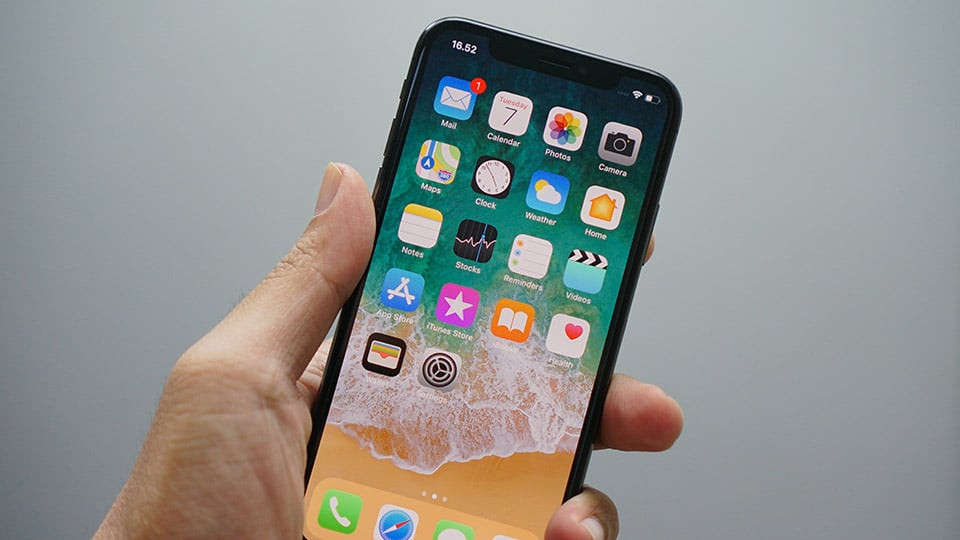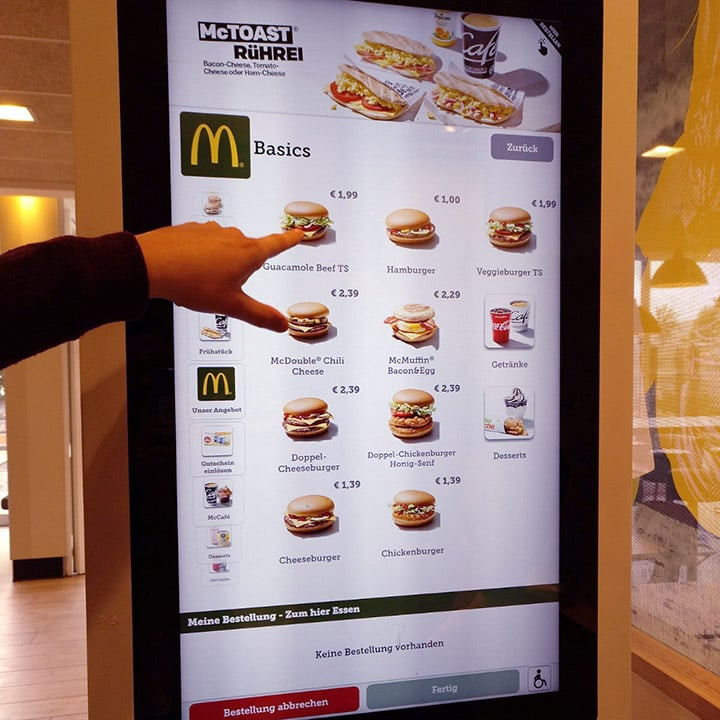Touch screen technology, a staple in our modern lives, impacting everything from smartphones to interactive kiosks, actually has a surprisingly long and innovative history, and pioneer-technology.com is here to walk you through it. The creation of touch screen capabilities has gone through an enormous transformation over the years, and this progress has revolutionized how humans engage with technology. Let’s dive into the history of touch screen innovation, its current applications, and future directions in this easy to understand article, while gaining expertise in human-computer interaction, input methods, and display technologies.
1. The Genesis of Touchscreen Technology: The 1960s
Touchscreen technology took its first steps in the mid-1960s. Eric Arthur Johnson is the person that we can credit with pioneering the first touch screen and introducing the idea of direct finger interaction with electronic displays.
1.1 Eric Arthur Johnson’s Pioneering Work
In 1965, Eric Arthur Johnson at the Royal Radar Establishment in Malvern, England, conceptualized and developed the first touch screen. This touch screen aided in air traffic control. Johnson’s approach, detailed in his published paper and subsequent patent in 1969, laid the conceptual foundation for future touch screen technologies.
1.2 Early Touchscreen Concepts
 E.A. Johnson's early touchscreen technology concept
E.A. Johnson's early touchscreen technology concept
Johnson’s original design was a capacitive touch screen, relying on the user’s finger to complete an electrical circuit on the screen. This initial foray into touch technology was groundbreaking, setting the stage for further innovations in the field. His innovative ideas are the foundation for all of our touch screen devices that we use today.
2. Development of Resistive Touchscreens: The 1970s
The 1970s marked the advent of resistive touchscreens, offering a more accessible and practical approach to touch technology, a notable advancement from capacitive technology. This advancement contributed to the commercialization of touch screen technology.
2.1 Dr. G. Samuel Hurst and the Elograph
Dr. G. Samuel Hurst developed the resistive touch screen almost by accident, during his time at the University of Kentucky. Hurst’s breakthrough involved adding a conductive cover sheet to the screen, which enabled touch recognition through pressure. This accidental discovery led to the creation of Elographics, the first curved glass touch interface.
2.2 Resistive vs. Capacitive Touchscreens
Resistive touchscreens quickly gained popularity due to their simplicity and cost-effectiveness. They are activated by physical pressure, making them usable with gloves or styluses, unlike capacitive screens which require direct skin contact. The creation of the resistive touch screen gave way for more advanced capabilities and improvements.
3. Multitouch Technology Emerges: The 1980s
The 1980s were a period of rapid advancement in computer technology and digital displays. Multitouch capabilities emerged, which drastically changed how people could engage with digital interfaces.
3.1 Key Contributors to Multitouch Development
Nimish Mehta developed the first human-controlled multitouch device at the University of Toronto in 1982, this was a pivotal moment. Myron Krueger, an American computer artist, pioneered gesture interaction through an optical system. Following this, Bob Boie at Bell Labs created the first transparent multitouch screen interface, significantly advancing the technology.
3.2 The Significance of Multitouch
Multitouch technology allowed users to interact with screens in more complex ways, such as pinching to zoom or using multiple fingers for different commands. This development was crucial for creating more intuitive and user-friendly interfaces.
4. Apple’s iPhone Revolution: 2007
The release of Apple’s iPhone in 2007 marked a pivotal moment in the history of touchscreen technology. It popularized touchscreens and catapulted them into mainstream use.
4.1 The iPhone’s Impact on Touchscreen Popularity
 Touchscreen history marked by Apple's iPhone
Touchscreen history marked by Apple's iPhone
The iPhone was the first smartphone that had a capacitive touchscreen, which allowed for more accurate and responsive touch input than resistive screens. Its user-friendly interface and multitouch capabilities made it an instant success, setting a new standard for mobile devices. The innovative features that were presented changed the landscape for all smartphone competitors.
4.2 Apple’s Multitouch Interface
The iPhone’s multitouch interface allowed users to perform actions like zooming in and out of maps and photos with a simple pinch gesture, revolutionizing the mobile user experience. This intuitive interaction made technology more accessible and engaging for the average person.
5. Types of Touchscreen Technologies
Touchscreen technology has evolved into several distinct types, each with its strengths and applications. The innovations present an array of new technology and capabilities to all types of users.
5.1 Camera-Based Tracking
In camera-based tracking, a camera sensor is used to observe the display surface. AI algorithms then evaluate the camera data to extract touch point coordinates. Though offering the potential for numerous simultaneous touch points, this technology has largely been replaced by more modern solutions.
5.2 IR Touch-Frames
IR Touch-Frames involve adding a frame to a display that provides an IR light overlay and sensors. When a finger blocks the light, it registers as a touch. IR Frames are often used for video wall systems. They require consistent cleaning to avoid dust interference.
5.3 Projected Capacitive (PCAP)
PCAP technology is the modern industry standard for touch technology, found in most of today’s B2C products. PCAP uses thin wires as an extra layer behind the screen’s glass top to detect touch. It offers high precision and supports multiple touch points.
6. The Expansion of Touchscreen Applications
Touchscreen technology has expanded beyond personal devices and has been integrated into various business and public applications. This expansion has introduced new levels of interactivity to all fields.
6.1 B2C to B2B Transition
Touchscreens have transitioned from primarily personal use (B2C) to various B2B applications. Larger touchscreen panels at lower costs have made the technology more viable for businesses.
6.2 McDonald’s Self-Order Systems
 Touchscreen terminals at McDonald's
Touchscreen terminals at McDonald's
McDonald’s began installing self-service kiosks in all countries in 2018, showing how well touch screen technology can be used in business. These kiosks, using similar technology to consumer touchscreens, have increased revenue by allowing for order customization. These capabilities have transformed the fast food space.
7. The Evolution of Touch Interaction
Touchscreen technology has evolved from single-touch to multitouch and now to multi-user interaction, enhancing collaborative opportunities. The evolution of interaction methods has transformed human-computer interaction.
7.1 From Single-Touch to Multi-Touch
The first touchscreen technology, single touch, emulated a mouse interface with a finger. The iPhone popularized multitouch technology, enabling gestures like pinch-to-zoom. Multitouch capabilities have become a standard feature in modern devices.
7.2 Multi-User Touchscreen Technology
Multi-user interaction, the latest advancement in touchscreen technology, allows multiple people to interact with a display simultaneously. These large-scale touchscreens facilitate collaborative tasks and offer new possibilities for human-computer interaction.
8. Software for XXL Touchscreens
Software is essential for managing interactions on large-scale touchscreens, and it requires innovative programming environments. The innovation is crucial for creating effective multi-user experiences.
8.1 The Role of Software in Touchscreen Functionality
While a good touchscreen sensor is essential, software technology manages every interaction. Platforms like Google Play and Apple AppStore have significantly contributed to the success of consumer touchscreen devices.
8.2 Challenges in Developing Multi-User Software
Large-scale touchscreens with multi-touch capabilities require innovative programming environments. Multi-user software represents a cutting-edge approach to human-computer interaction, which promotes the need for creative problem-solving and design.
9. Future Trends in Touchscreen Technology
Touchscreen technology continues to evolve, with pressure sensitivity and semi-transparent touchscreens paving the way for new applications. These trends are setting the stage for the future of touch interaction.
9.1 Pressure Sensitivity
Touchscreens are beginning to incorporate pressure sensitivity, enabling a new interaction method and unlocking new possibilities for user input. The increased capabilities can improve precision.
9.2 Semi-Transparent Touchscreens
Semi-transparent touchscreens are being used for Augmented Reality (AR) solutions, creating immersive and interactive experiences. These types of advanced applications combine the real and digital worlds.
10. Touchscreen Technology: A Comprehensive FAQ
Have questions about touchscreen technology? We’ve compiled a comprehensive FAQ to address common queries and enhance your understanding.
10.1 What Was the First Touchscreen Technology?
The first touchscreen technology was developed by E.A. Johnson in 1965 at the Royal Radar Establishment. It was a capacitive touch screen designed for air traffic control.
10.2 When Did Apple Introduce Touchscreen Technology to the Masses?
Apple introduced touchscreen technology to the masses with the release of the iPhone in 2007. The iPhone popularized capacitive touchscreens and multitouch interfaces.
10.3 What Are the Different Types of Touchscreen Technologies?
The different types of touchscreen technologies include camera-based tracking, IR Touch-Frames, and Projected Capacitive (PCAP). Each technology has its own unique method for detecting touch input.
10.4 How Have Touchscreen Applications Evolved Over Time?
Touchscreen applications have evolved from personal use (B2C) to business applications (B2B). They are now used in various industries, including retail, gastronomy, and corporate environments.
10.5 What Is Multi-User Touchscreen Technology?
Multi-user touchscreen technology enables multiple people to interact with a display simultaneously. This technology is used in large-scale touchscreens for collaborative tasks.
10.6 What Is the Role of Software in Touchscreen Functionality?
Software manages all interactions on a touchscreen. Innovative programming environments are required for large-scale touchscreens with multi-touch capabilities.
10.7 What Are the Future Trends in Touchscreen Technology?
Future trends in touchscreen technology include pressure sensitivity and semi-transparent touchscreens for Augmented Reality (AR) solutions.
10.8 How Did McDonald’s Use Touchscreen Technology?
McDonald’s began installing self-service kiosks in all countries in 2018. These kiosks use similar technology to consumer touchscreens and have increased revenue by allowing for order customization.
10.9 What Is PCAP Technology?
Projected Capacitive (PCAP) technology is the modern industry standard for touch technology. It uses thin wires behind the screen’s glass top to detect touch.
10.10 How Has Touch Interaction Evolved Over Time?
Touch interaction has evolved from single-touch to multitouch and now to multi-user interaction. Multitouch capabilities have become a standard feature in modern devices.
11. The Continued Evolution of Touchscreen Technology
Touchscreen technology has come a long way since its inception in the 1960s, evolving from simple capacitive screens to the sophisticated multitouch displays we use today. The evolution of these technologies has drastically changed the capabilities of electronic devices. From E.A. Johnson’s early work to Apple’s iPhone revolution, each innovation has built upon the last, creating more intuitive and engaging user experiences. This innovative approach has transformed human-computer interaction.
11.1 Touchscreen Technology Today
Today, touchscreens are ubiquitous, appearing in smartphones, tablets, kiosks, and even large interactive displays in public spaces. The widespread adoption of touch technology has transformed how we interact with computers and digital information, and they have become essential tools in both our personal and professional lives. They have revolutionized the way we engage with technology.
11.2 Pioneer-Technology.com: Your Guide to the World of Touchscreen Technologies
At pioneer-technology.com, we are dedicated to providing you with the latest information, insights, and analysis on touchscreen technologies. Whether you’re a tech enthusiast, industry professional, or simply curious about the world of touchscreens, our website offers a wealth of resources to keep you informed and engaged. You can learn about all of the technology with pioneer-technology.com.
12. Overcoming the Challenges of Understanding Touchscreen Technology
Keeping up with the fast pace of technology advancements can be overwhelming. Understanding the complexities and potential applications of new technologies can be challenging, and pioneer-technology.com is here to solve these challenges.
12.1 Challenges in Staying Updated
Staying updated with the rapid advancements in technology can be daunting. It is important to stay abreast of the constant changes in digital technology,
12.2 Pioneer-Technology.com’s Solutions
Pioneer-technology.com offers in-depth and easy-to-understand information about pioneering technologies. We provide objective assessments and insights into new products and services.
Are you ready to explore the exciting world of touchscreen technology and stay ahead of the curve? Visit pioneer-technology.com today to discover the latest articles, in-depth analysis, and expert insights. Stay informed, stay engaged, and unlock the full potential of technology with pioneer-technology.com.
Address: 450 Serra Mall, Stanford, CA 94305, United States.
Phone: +1 (650) 723-2300.
Website: pioneer-technology.com.
